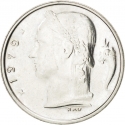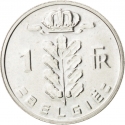You are about to finish your registration. Please check your mailbox (including spam folder). There should be a letter with a confirmation link. Check setting to make sure that your e-mail address is correct.
Send letter againDescription
The Ptolemaic Kingdom was an Ancient Greek state based in Egypt during the Hellenistic Period. It was founded in 305 BC by Ptolemy I Soter, a companion of Alexander the Great, and lasted until the death of Cleopatra VII in 30 BC. Ruling for nearly three centuries, the Ptolemies were the longest and most recent Egyptian dynasty of ancient origin.
Ptolemy III Euergetes (Ptolemaios Euergetes, "Ptolemy the Benefactor"; c. 280 – 222 BC) was the third pharaoh of the Ptolemaic dynasty in Egypt from 246 to 222 BC. The Ptolemaic Kingdom reached the height of its military and economic power during his kingship, as initiated by his father Ptolemy II Philadelphus.
Ptolemy III was the eldest son of Ptolemy II and Arsinoe I. When Ptolemy III was young, his mother was disgraced and he was removed from the succession. He was restored as heir to the throne in the late 250s BC and succeeded his father as king without issue in 246 BC. On his succession, Ptolemy III married Berenice II, reigning queen of Cyrenaica, thereby bringing her territory into the Ptolemaic realm. In the Third Syrian War (246–241 BC), Ptolemy III invaded the Seleucid empire and won a near-total victory, but was forced to abandon the campaign as a result of an uprising in Egypt. In the aftermath of this rebellion, Ptolemy forged a closer bond with the Egyptian priestly elite, which was codified in the Canopus decree of 238 BC and set a trend for Ptolemaic power in Egypt for the rest of the dynasty. In the Aegean, Ptolemy III suffered a major setback when his fleet was defeated by the Antigonids at the Battle of Andros around 246 BC, but he continued to offer financial support to their opponents in mainland Greece for the rest of his reign. At his death, Ptolemy III was succeeded by his eldest son, Ptolemy IV.
Obverse

|
Depicts diademed, veiled, draped bust of Berenice II right, wearing delicate necklace; dotted border. |
|---|---|
Reverse

|
Depicts cornucopia containing grain ear, pyramidal cake, and pomegranates, with grape cluster hanging from the rim of horn at left, bound with royal fillet with ends floating sinuously; all between two laureate pileus helmets of the Dioscuri with a dotted border. BEPENIKHΣ-BAΣIΛIΣΣHΣ |
| Edge |







